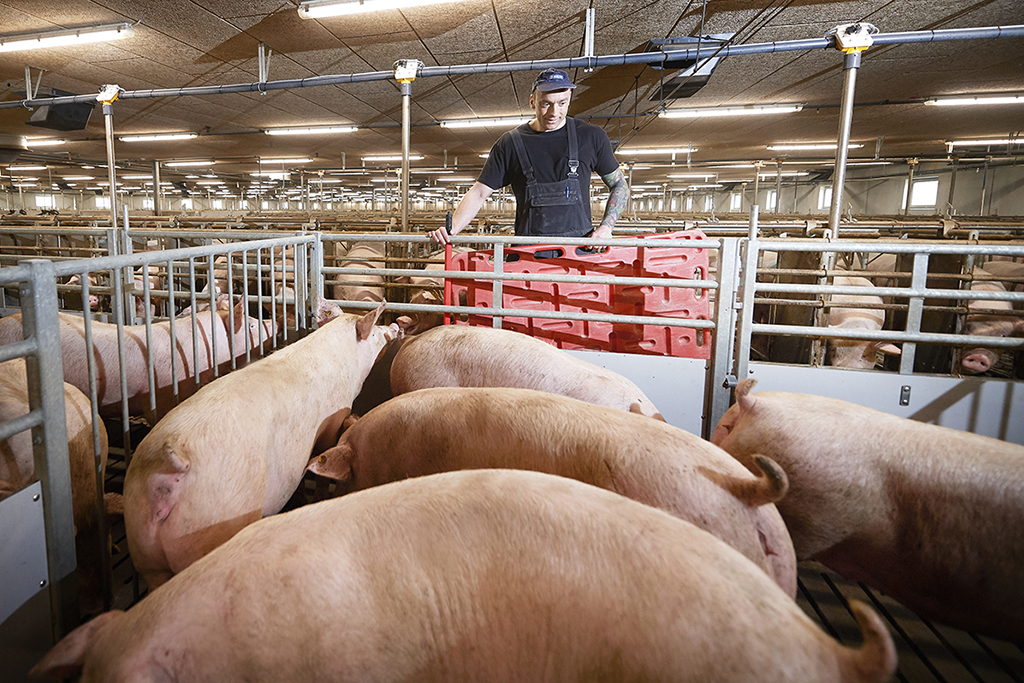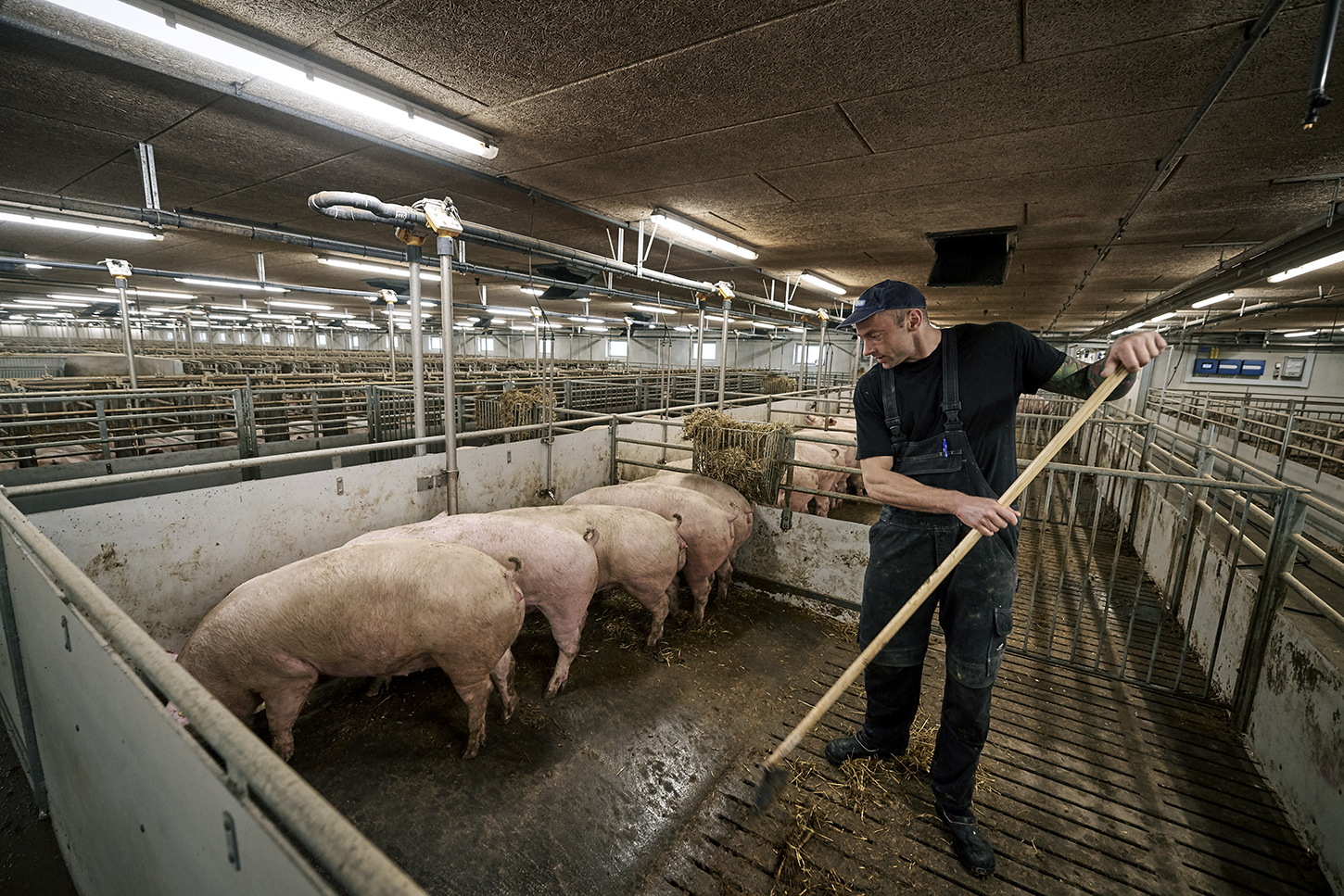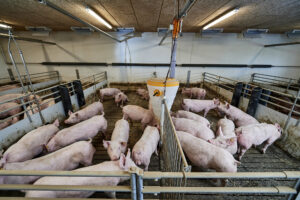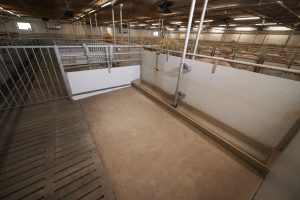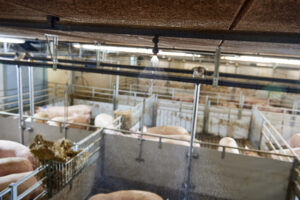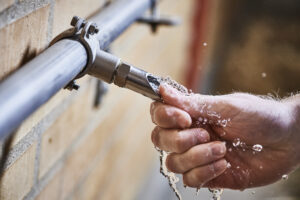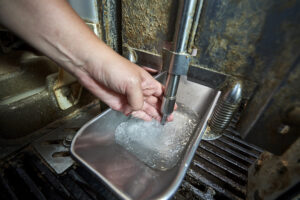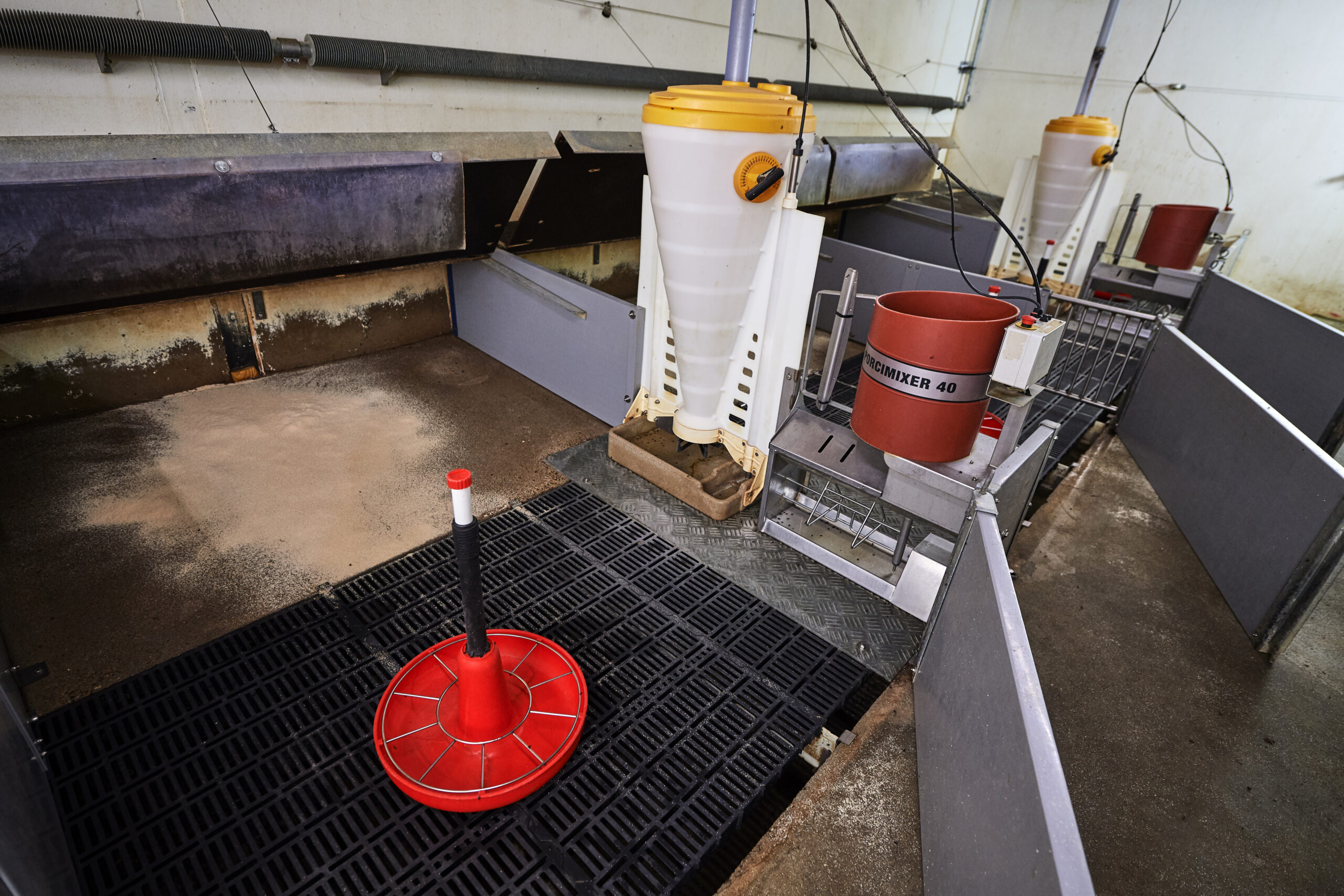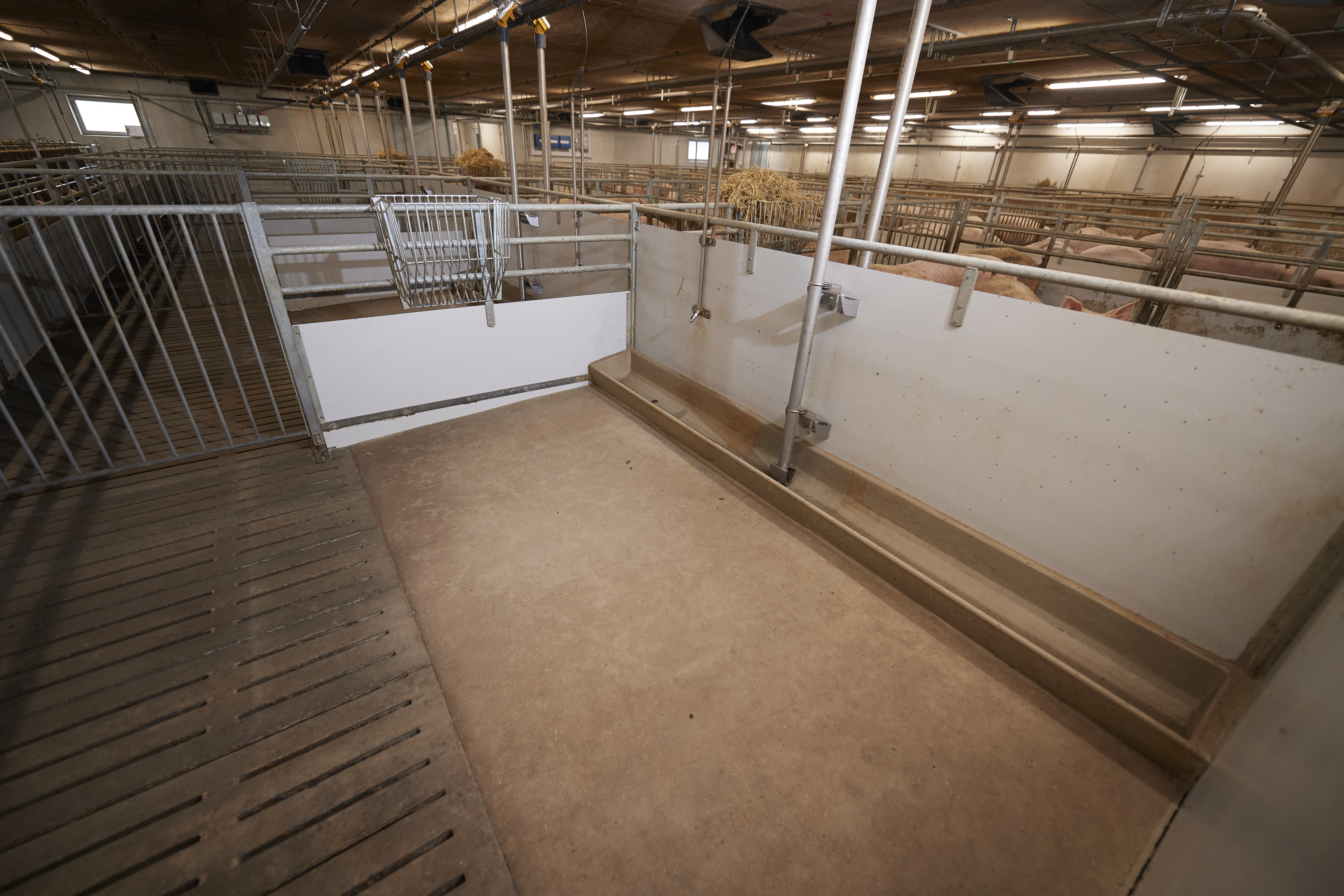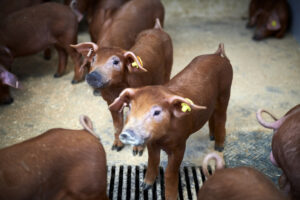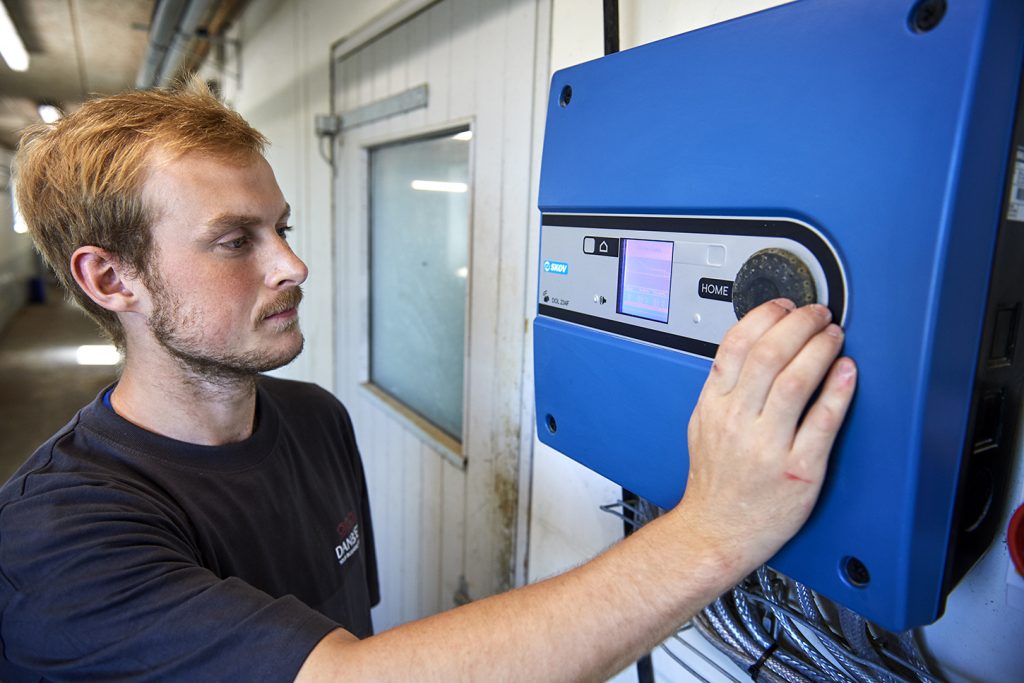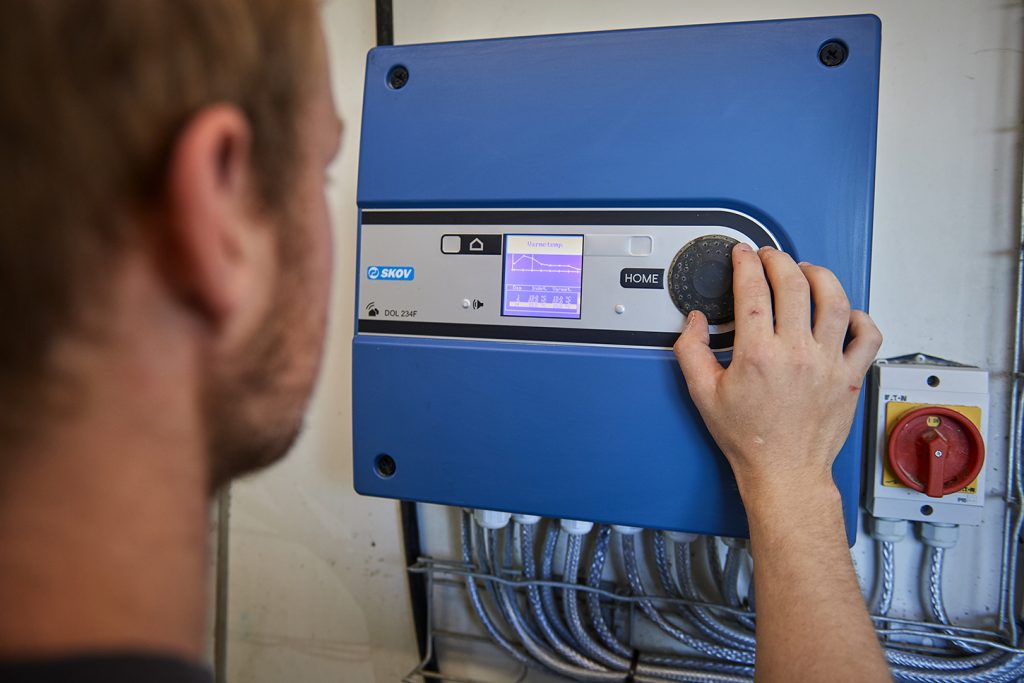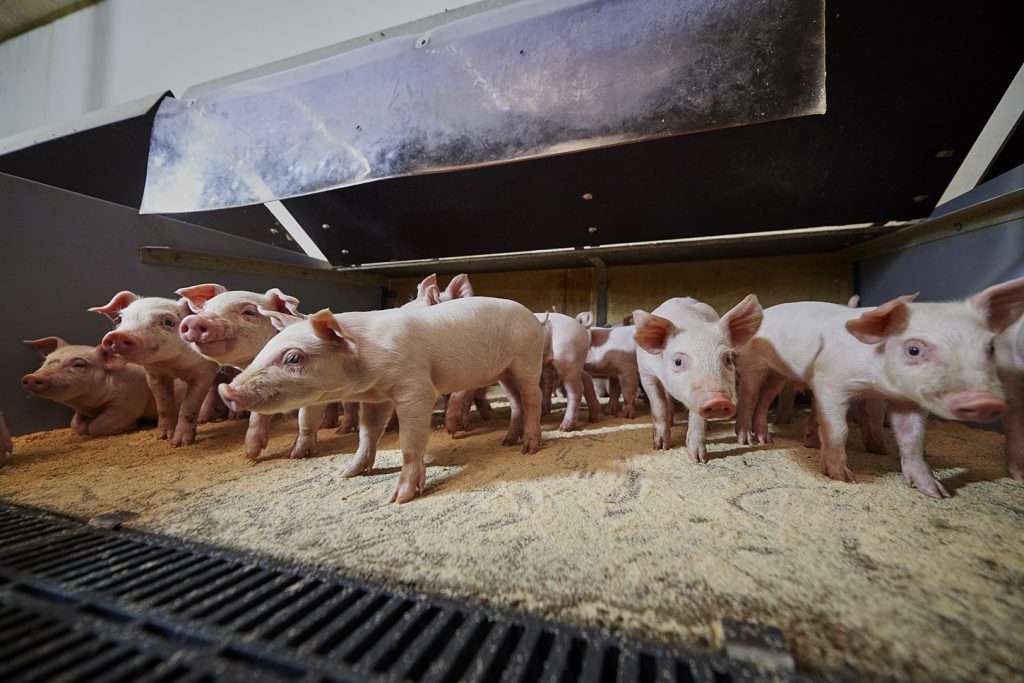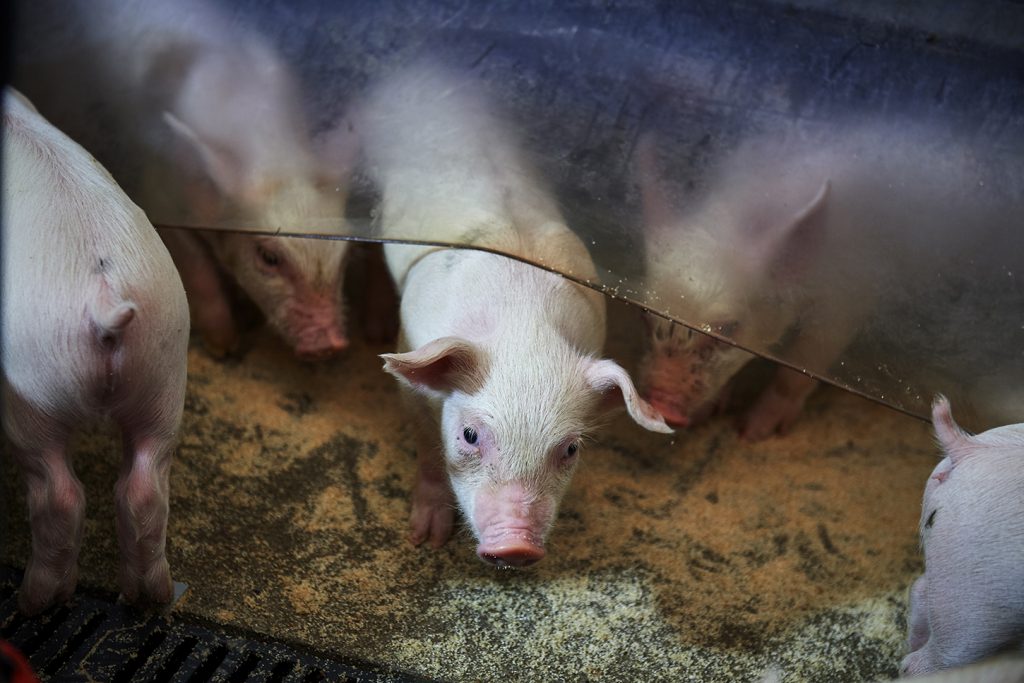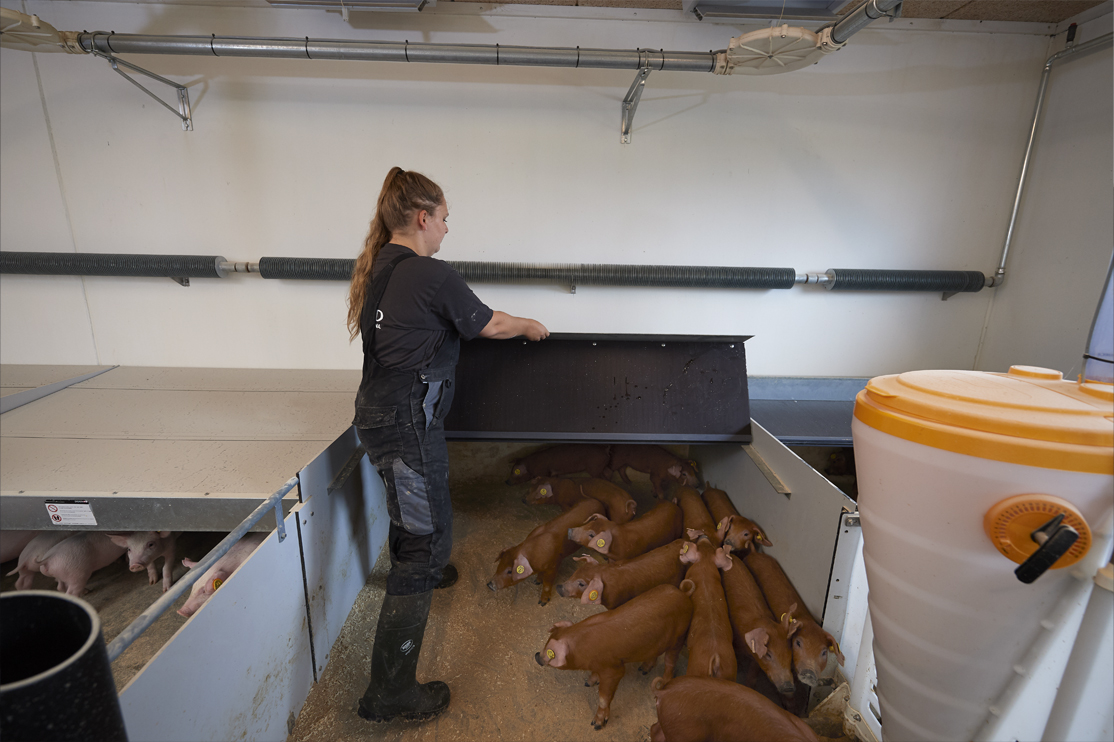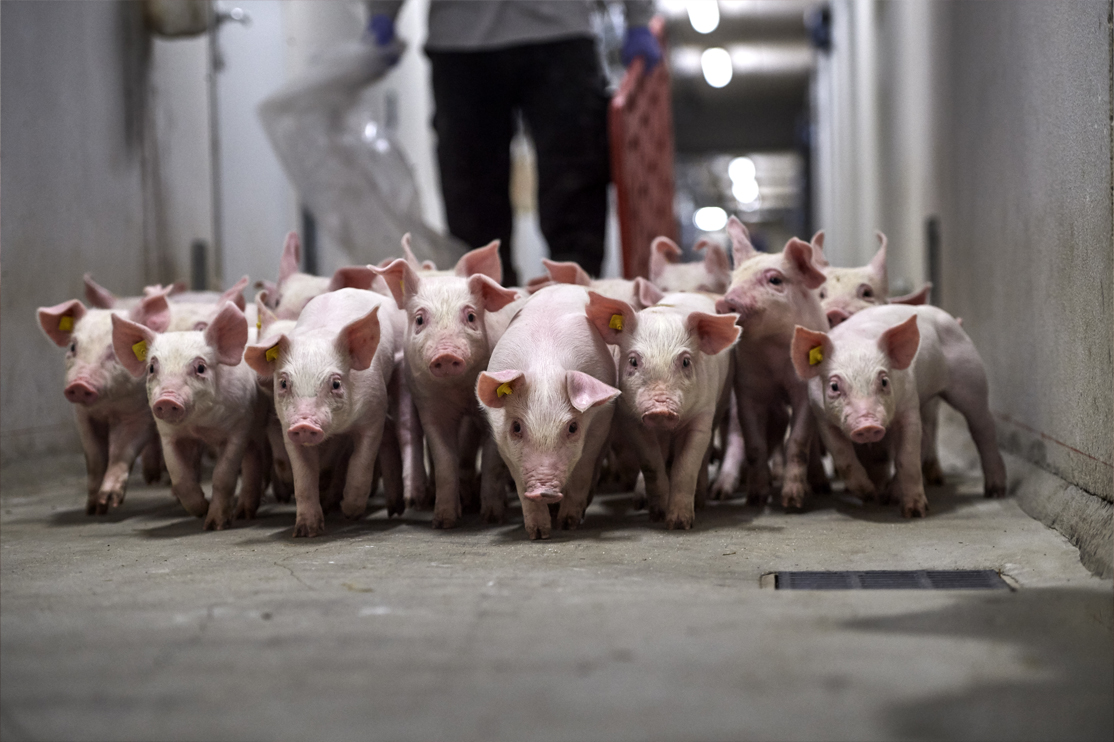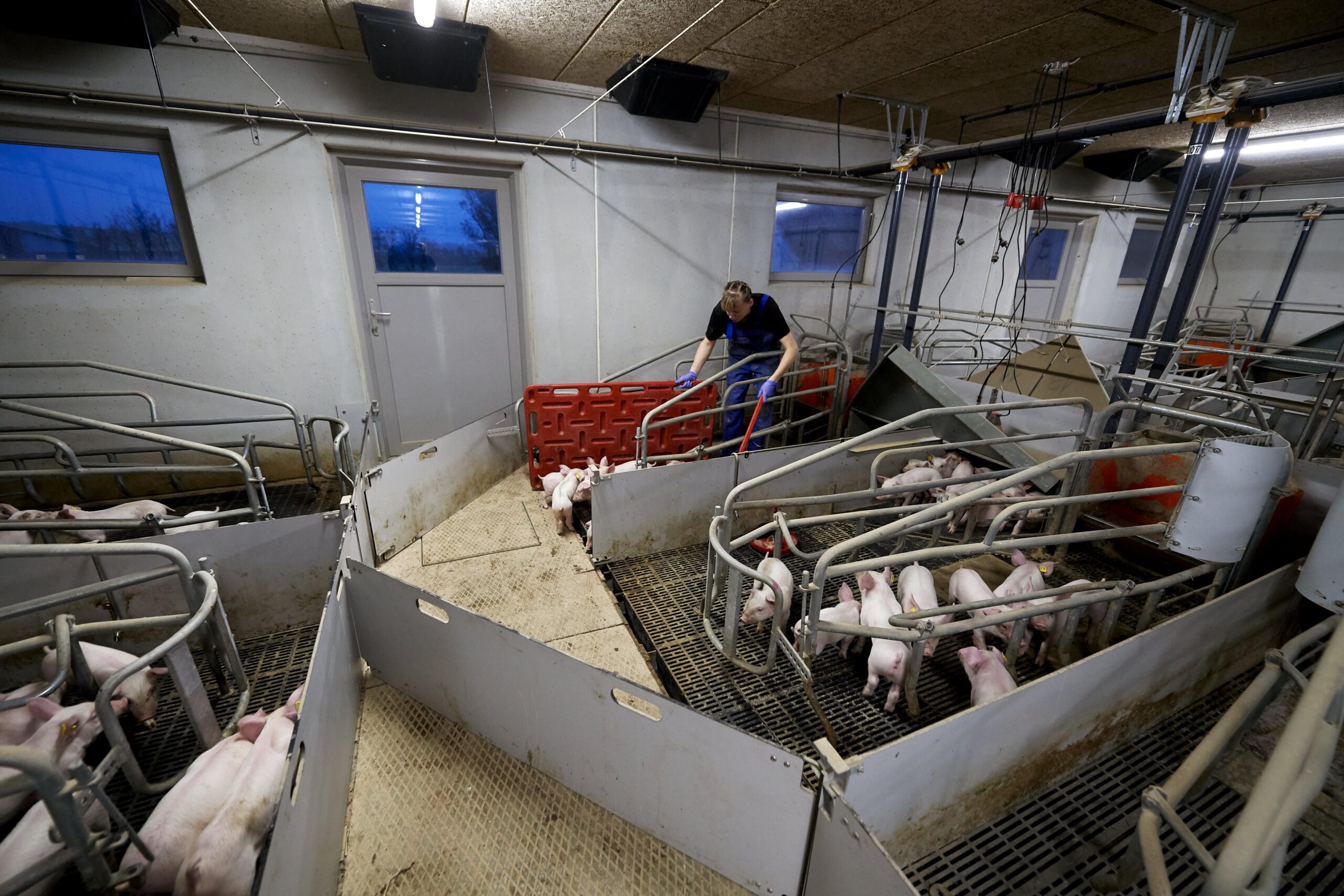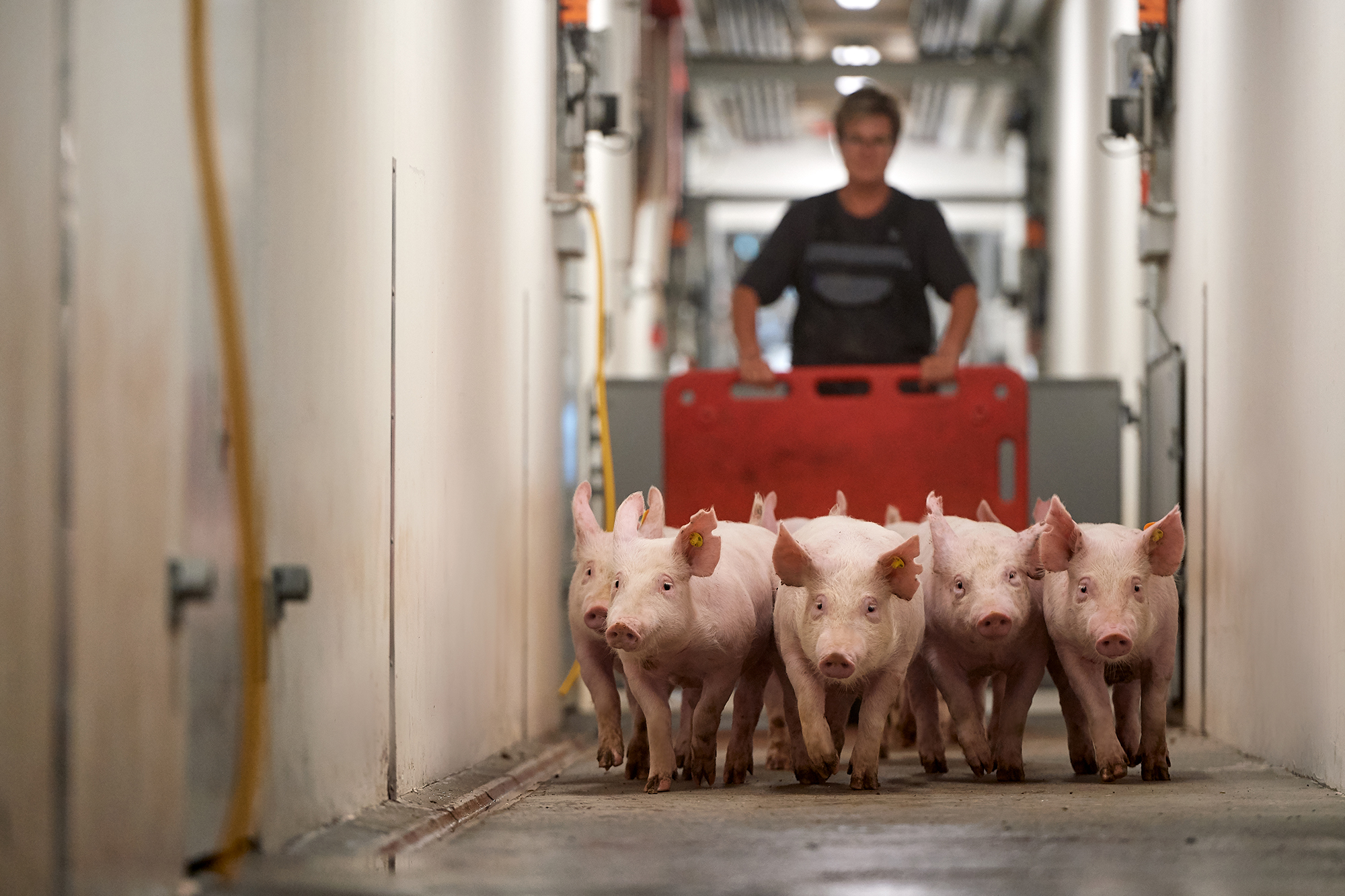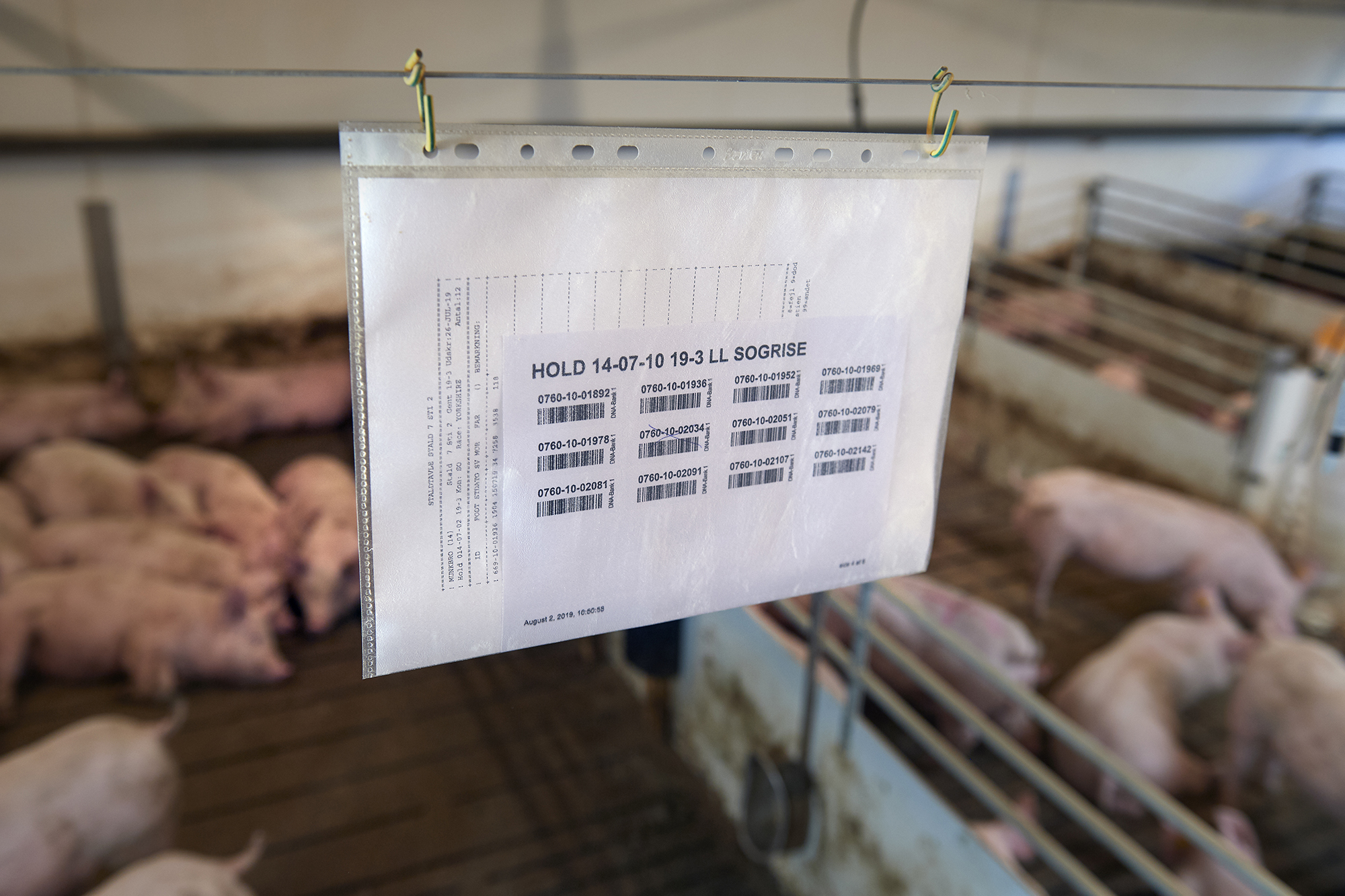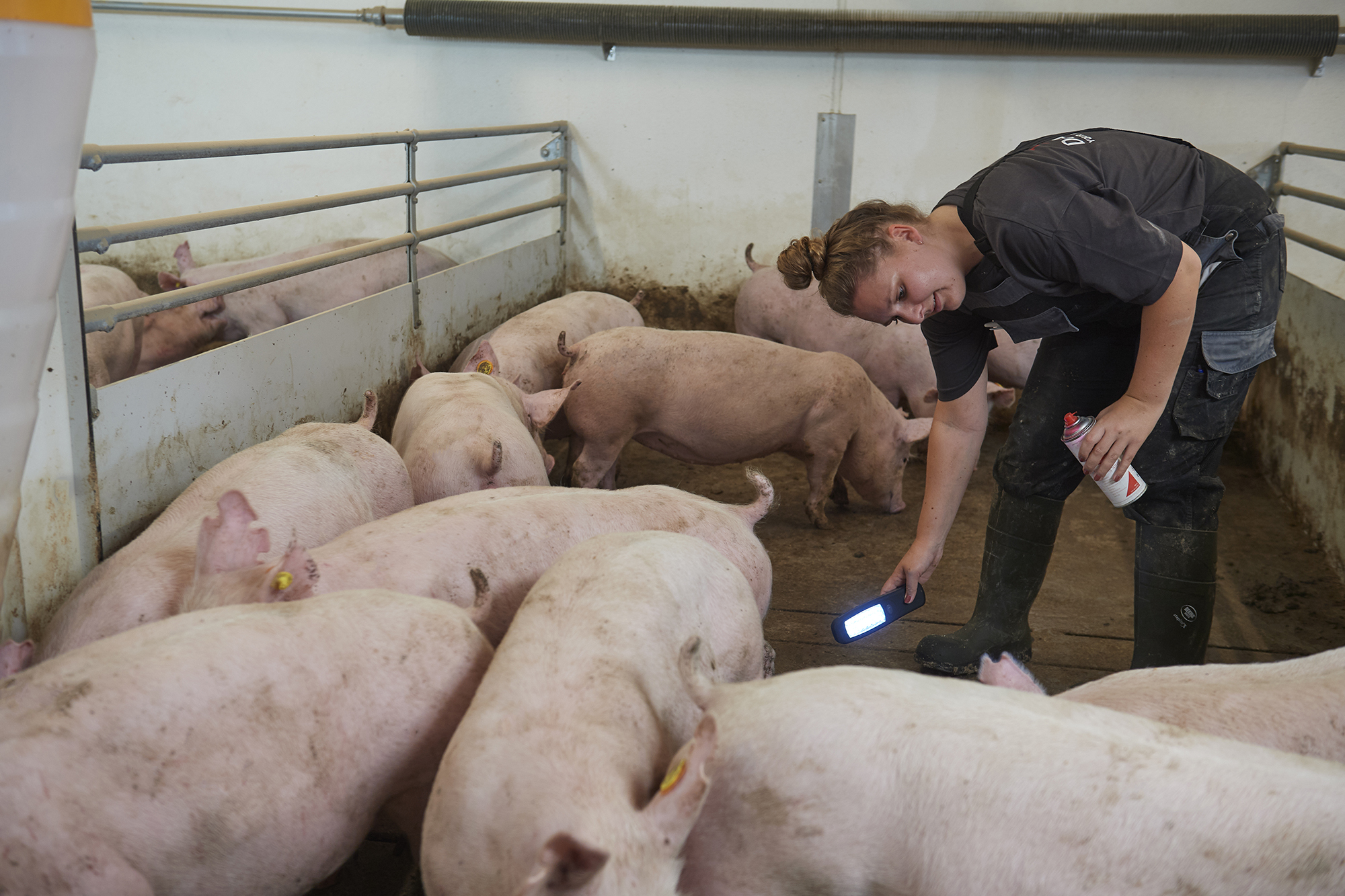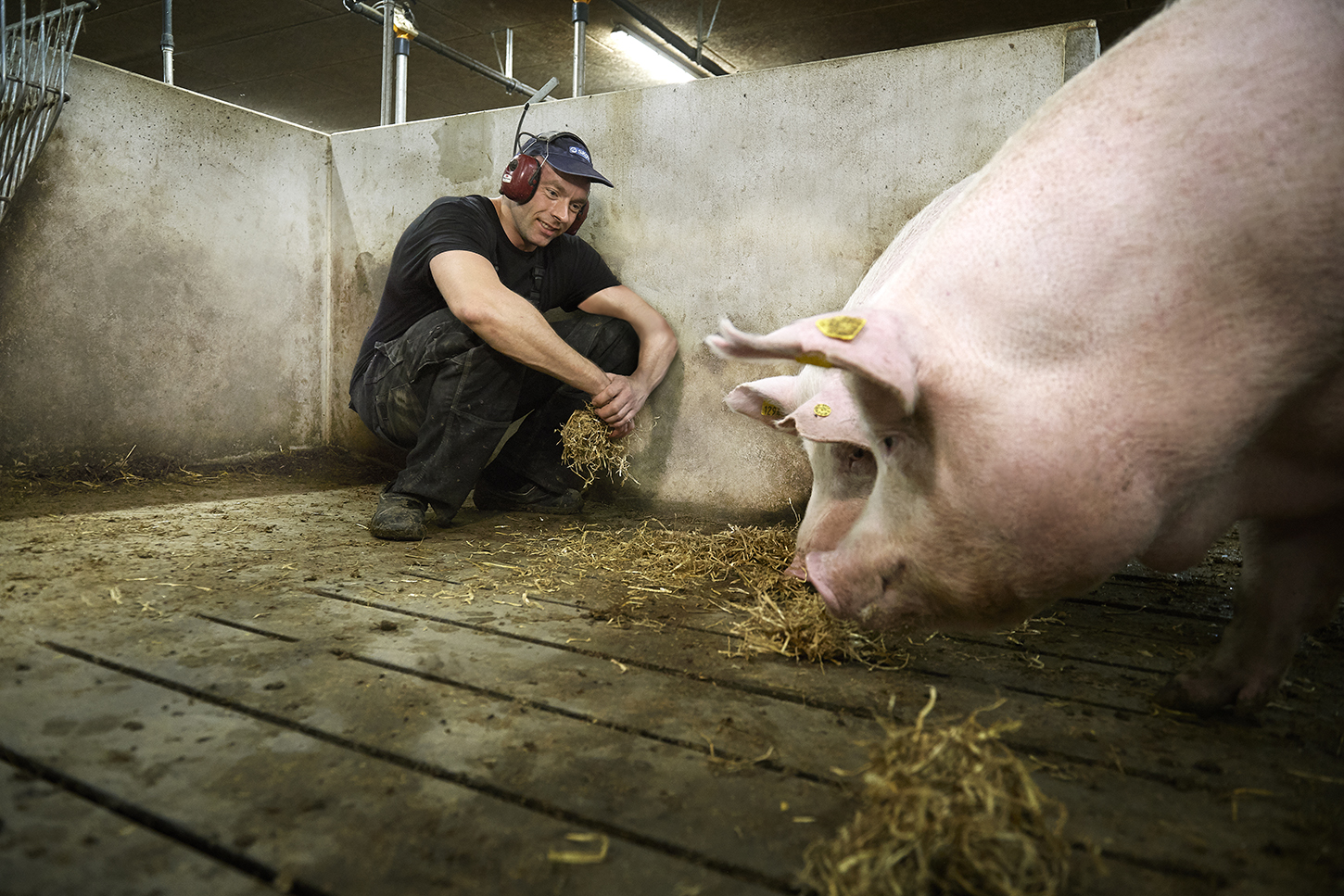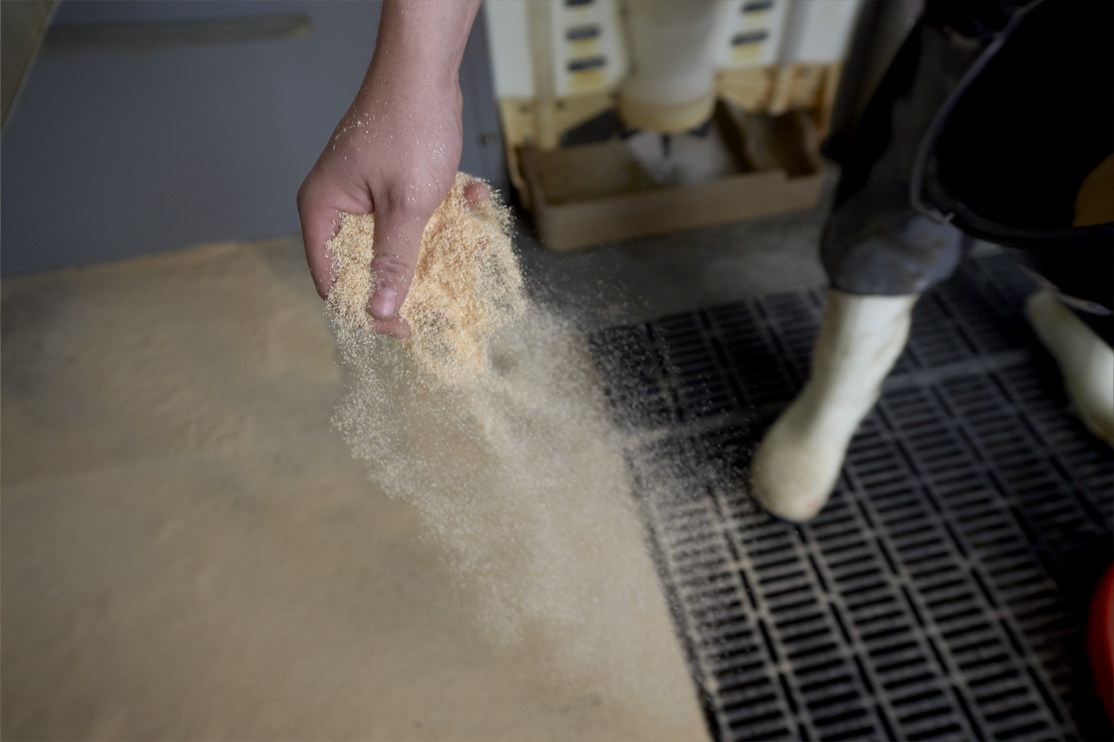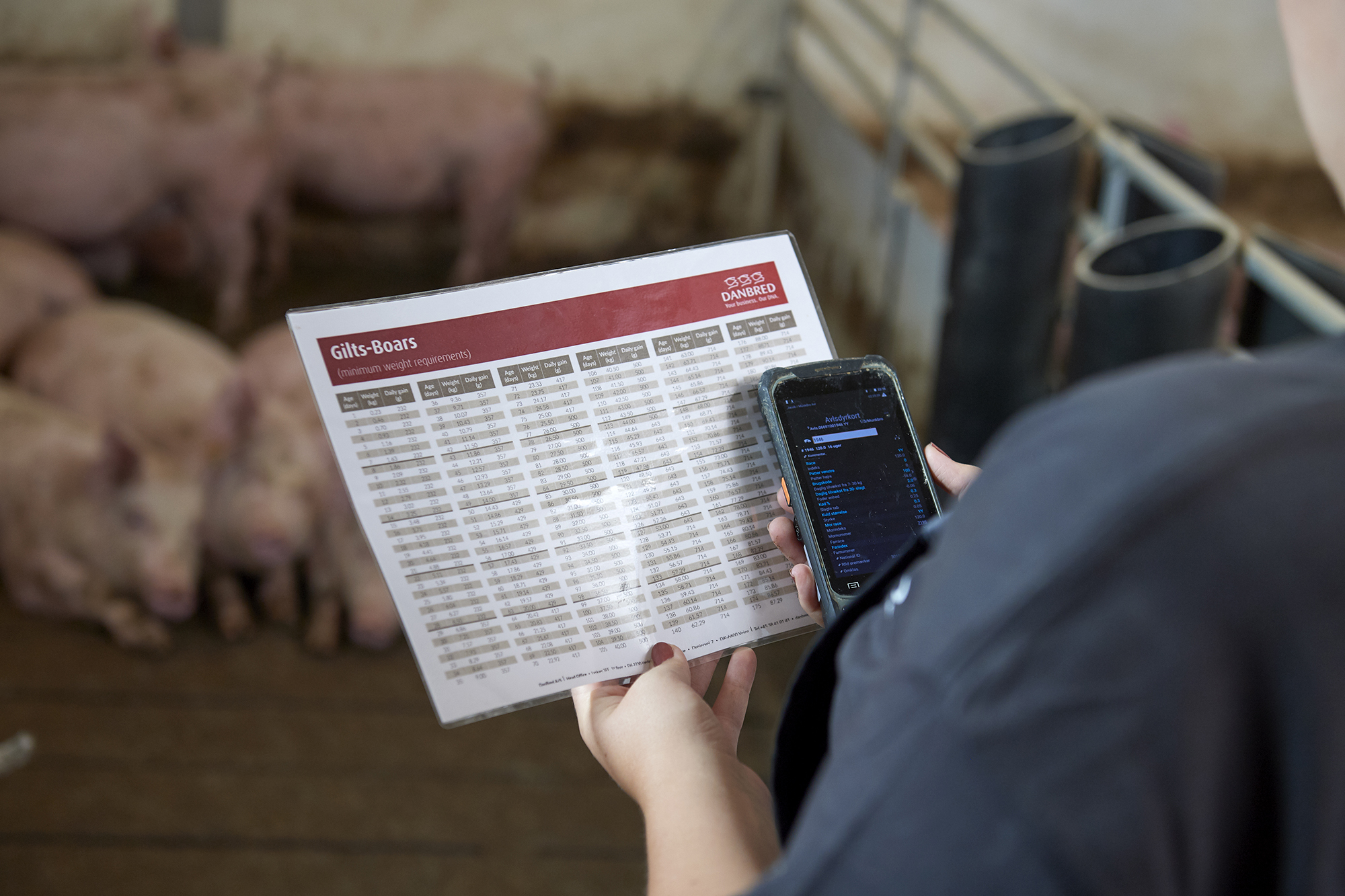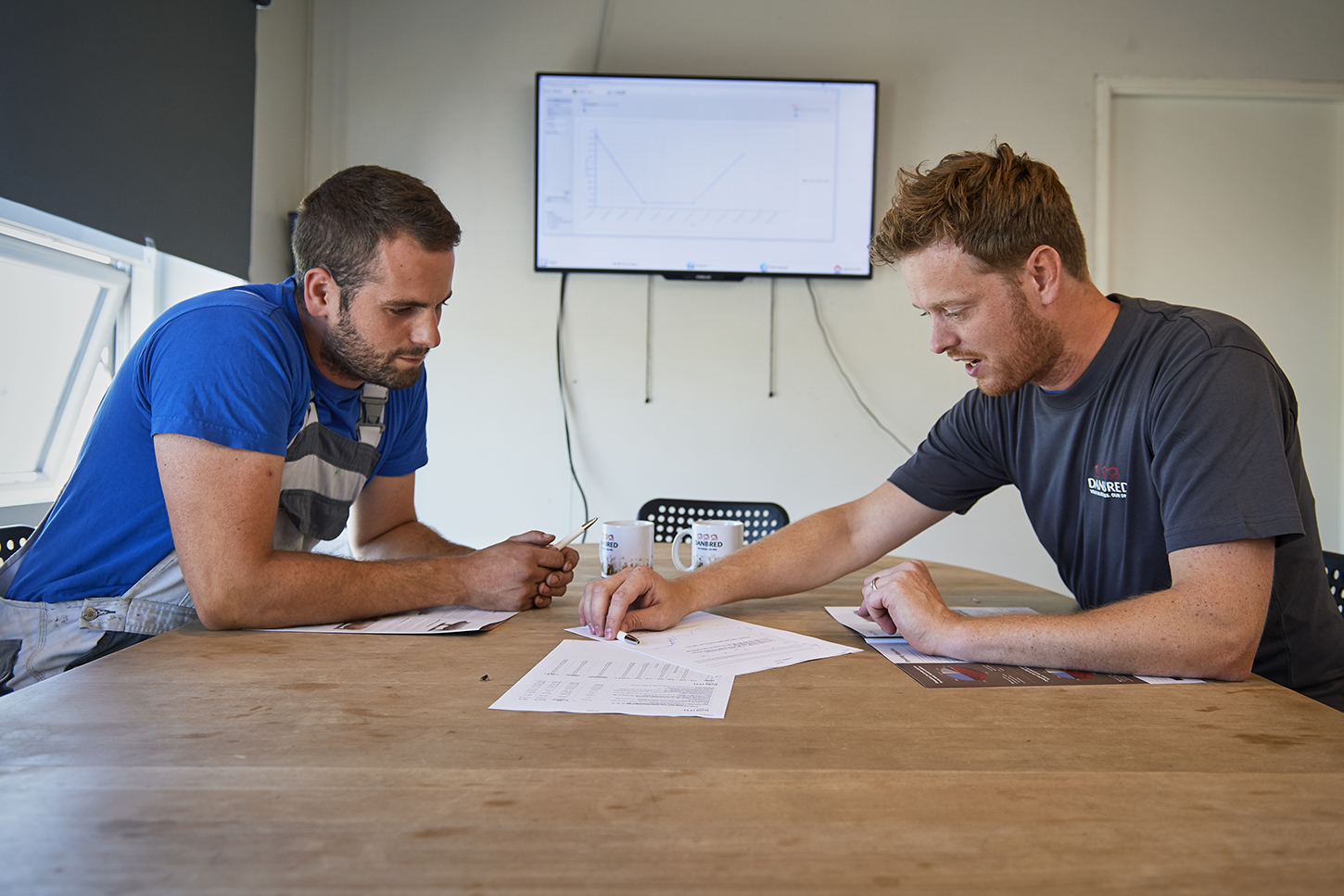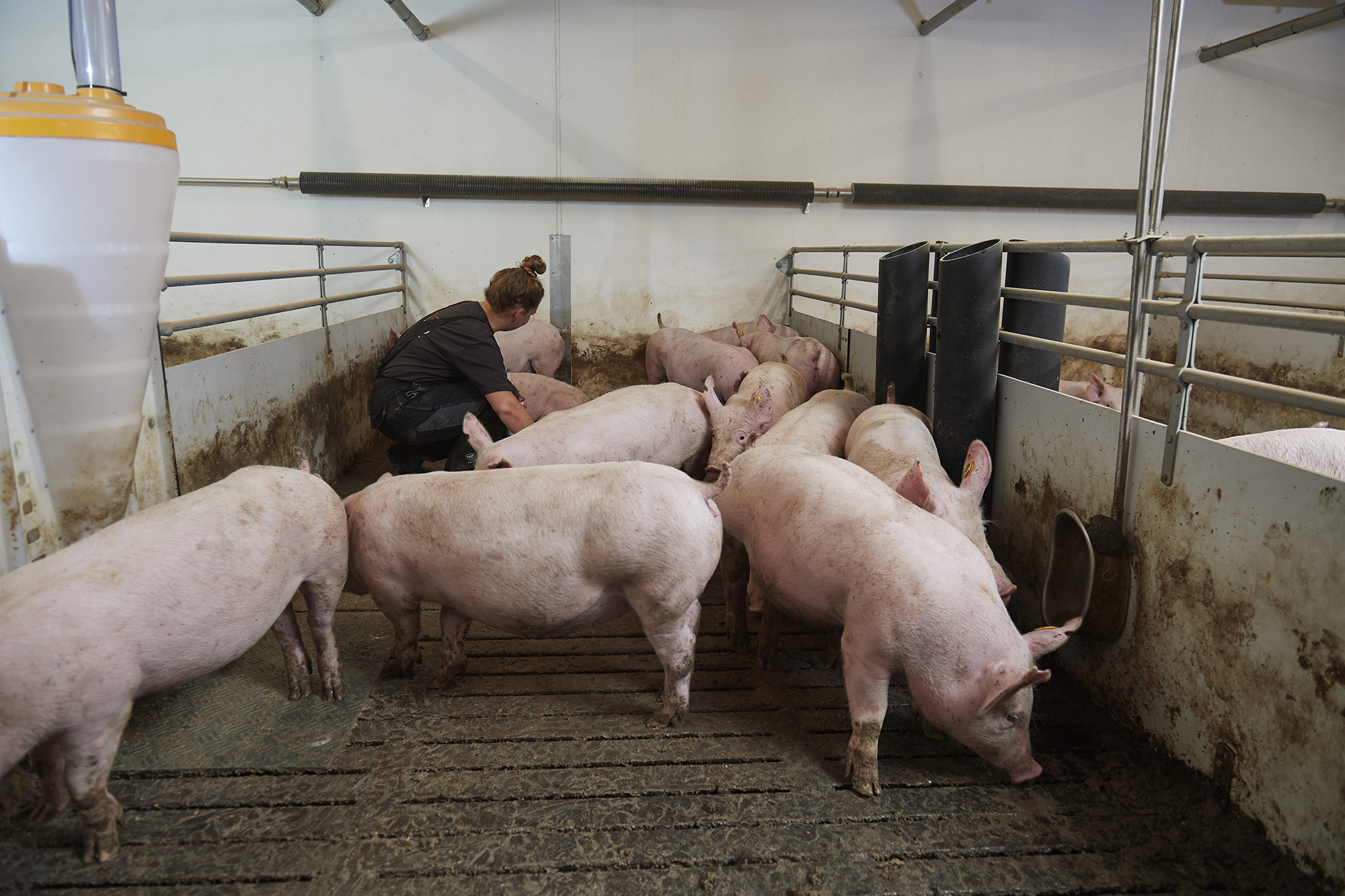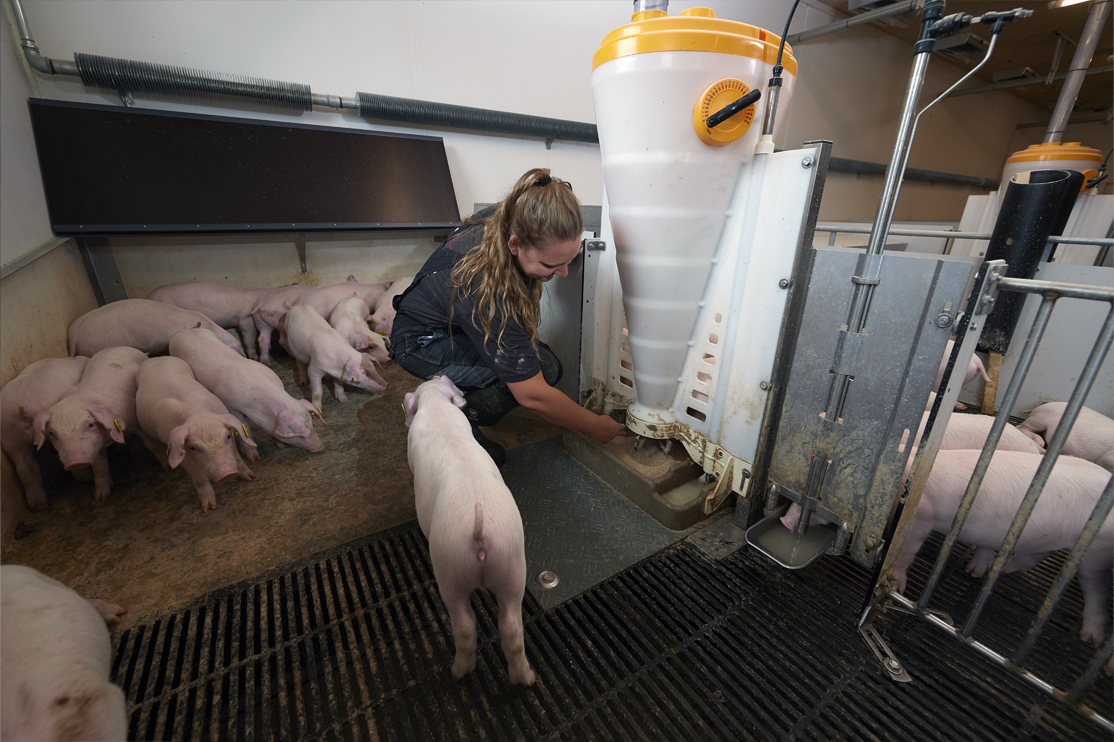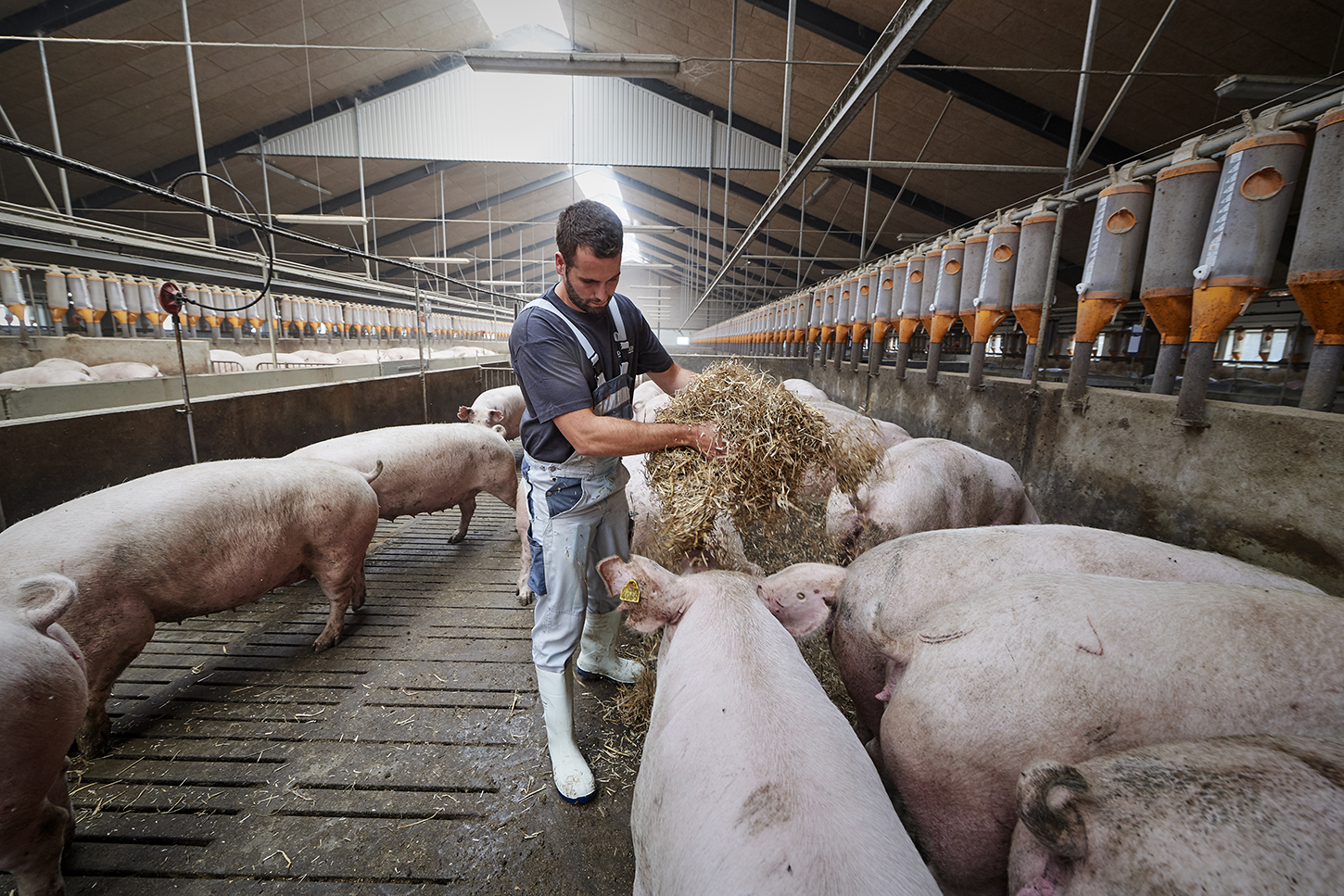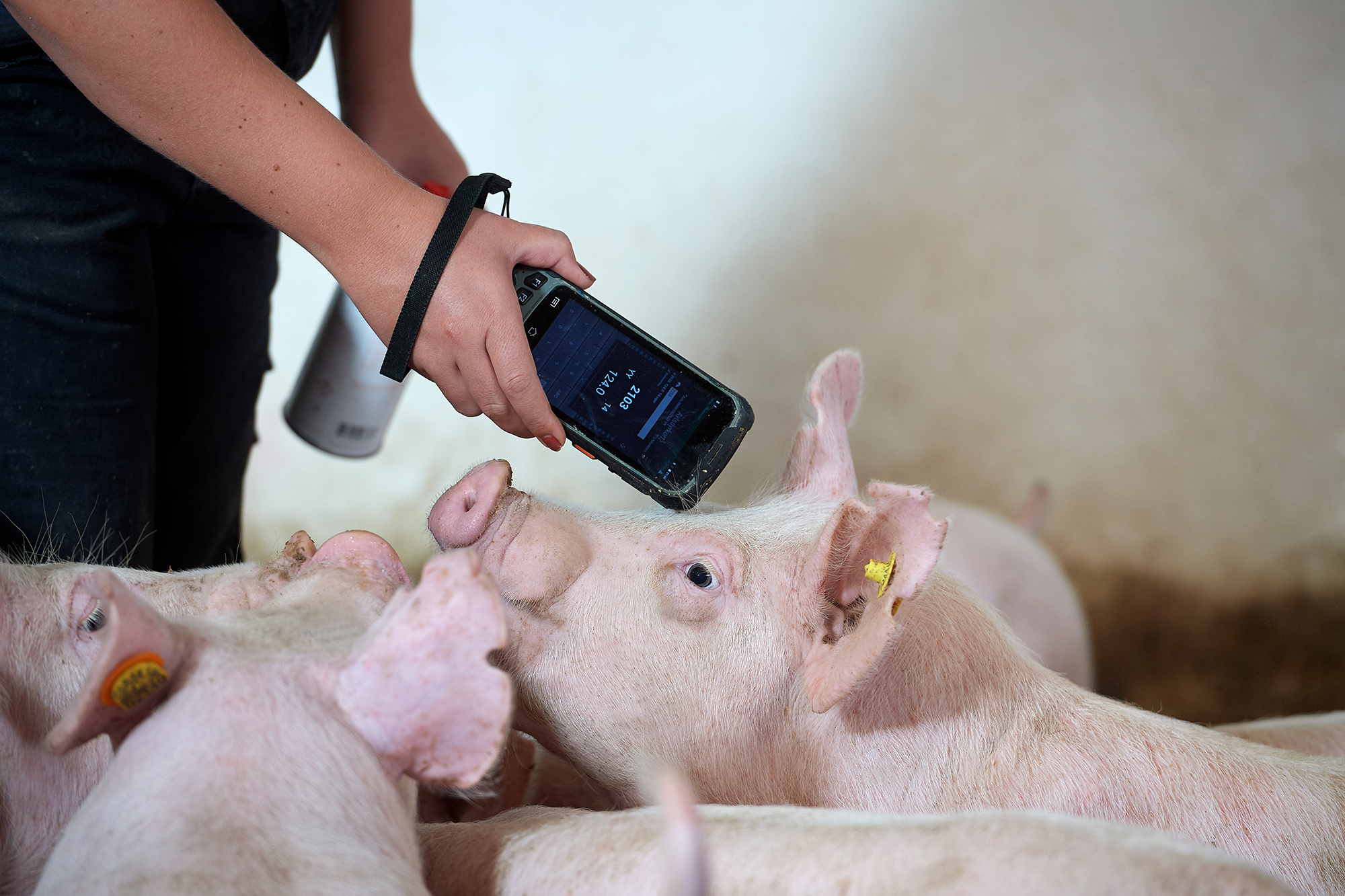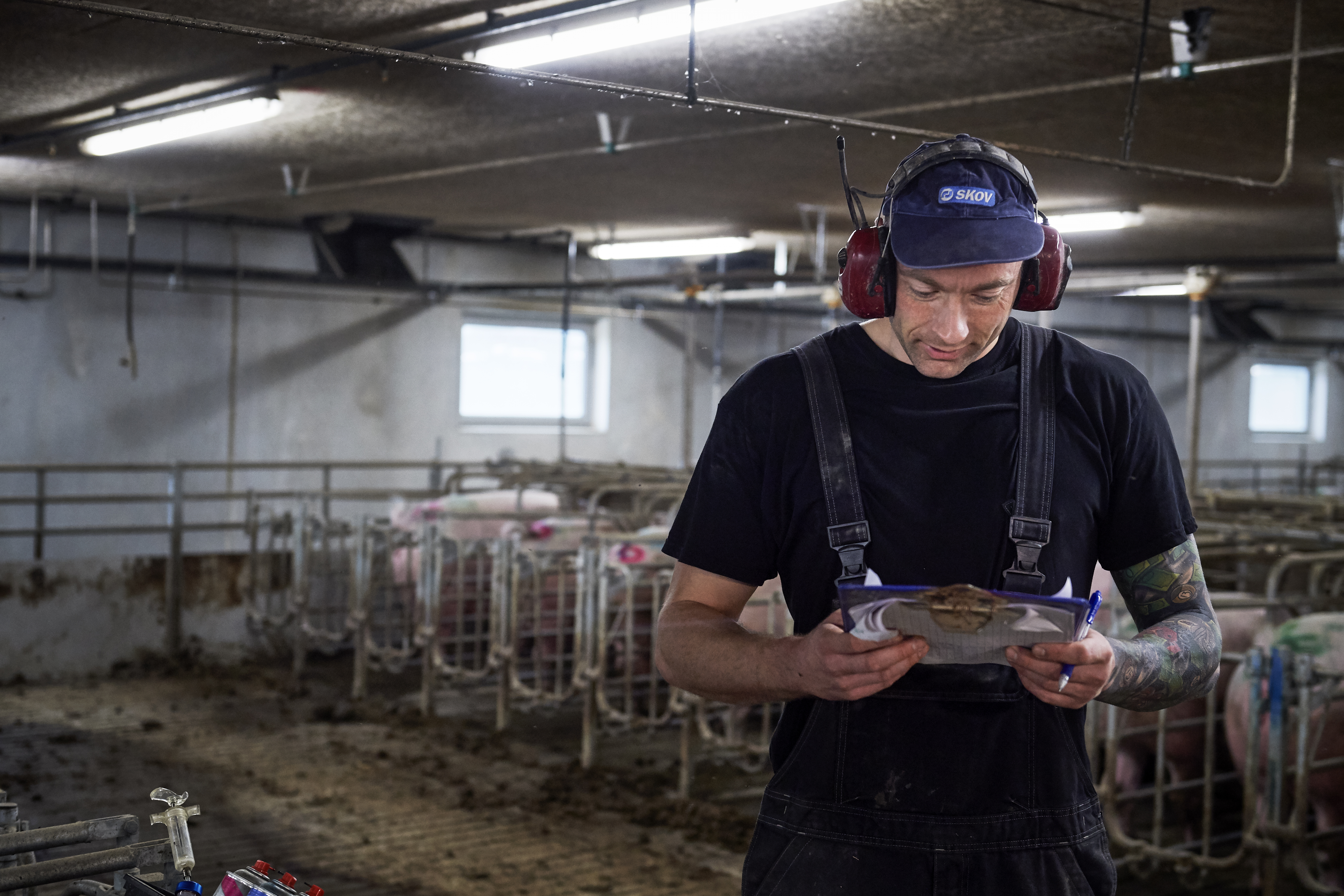Rearing conditions
Optimal housing and handling of breeding animals
Housing in the growth period is key in ensuring individual animal quality, especially in regard to longevity and lifetime production. Focusing on housing conditions is an important element that should start in the farrowing unit.
 |
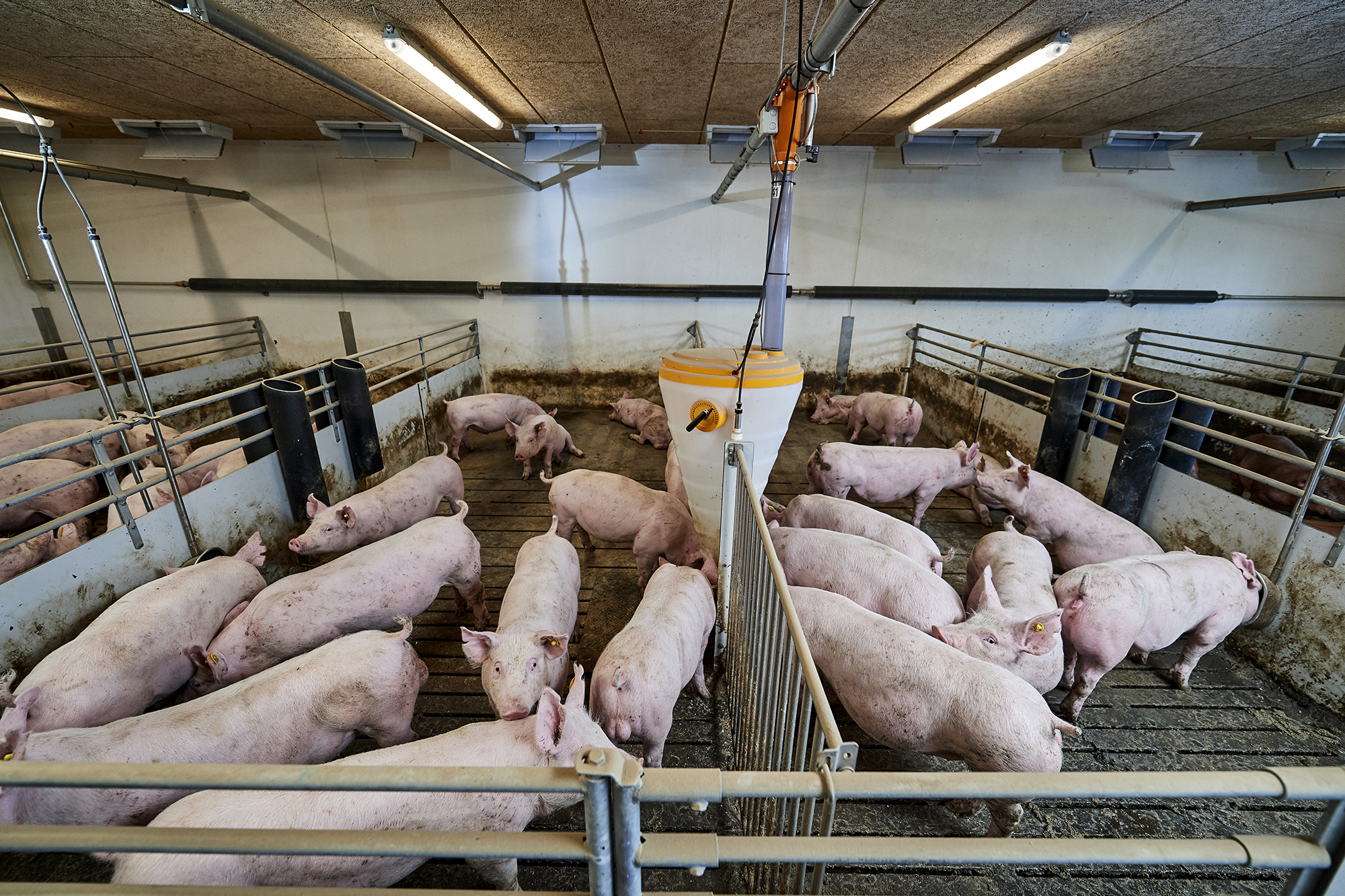 |
Housing conditions
Housing conditions in the growth period are an important factor in the overall quality of the breeding animals in the herds. Not only are housing conditions essential contributors to animal health and welfare, but also in the overall conformation and future productivity.
|
|
|
Pen layout
The layout of pens for breeding animals must accommodate high-quality animals and natural behaviour at the same time. Promoting natural behaviour will enhance positive behaviour in the breeding animals in general, thus ensuring animals that are easily handled and ultimately resulting in higher overall quality and customer experience.
|
|
|
Pen layout for breeding animals should include solid partitioning in the resting area. Breeding animals will be calmer when they are not able to see neighbouring animals from the resting area. This is however also a way of accommodating natural behaviour as the breeding animals prefer to rest against a solid surface, rather than open space due to natural instincts. Note that partitions between the pens should have a height of approximately 1 m. This will keep the animals from jumping between pens and also reduce injuries if they try to jump the pens.
The resting area should be well-defined, with a distinct transition from the slats and of high quality. Furthermore, the resting area should be:
- free of draught.
- provided with straw, wood shavings or similar on a daily basis.
The well-defined resting area should be combined with partitions in the slatted area that allow for nose-to-nose contact. This will stimulate natural dunging behaviour, which is further enhanced through visibility and contact with neighbouring animals through the bars. Overall this pen layout takes both natural behaviour and increased animal quality into consideration – but also reduces time spent cleaning the pens.
|
|
|
Drinkers or water troughs can be placed In the transition from solid flooring to slats. This will minimise the risk of wet pens from the drinkers. These can be supplemented with nose drinkers in the slatted area, which are suited for breeding animals.
|
|
|
Pens for breeding animals should besides quality, take workflow and management routines into consideration. Working with breeding animals should always be as easy as possible to minimise potential stress to the animals. One thing can be to minimise issues during the movement of animals. If the pen doors are placed in a corner, it will easily be possible to move animals from one pen to another. And if the pen door is also able to open with the use of only one hand, the moving animals can also be handled by a single employee.
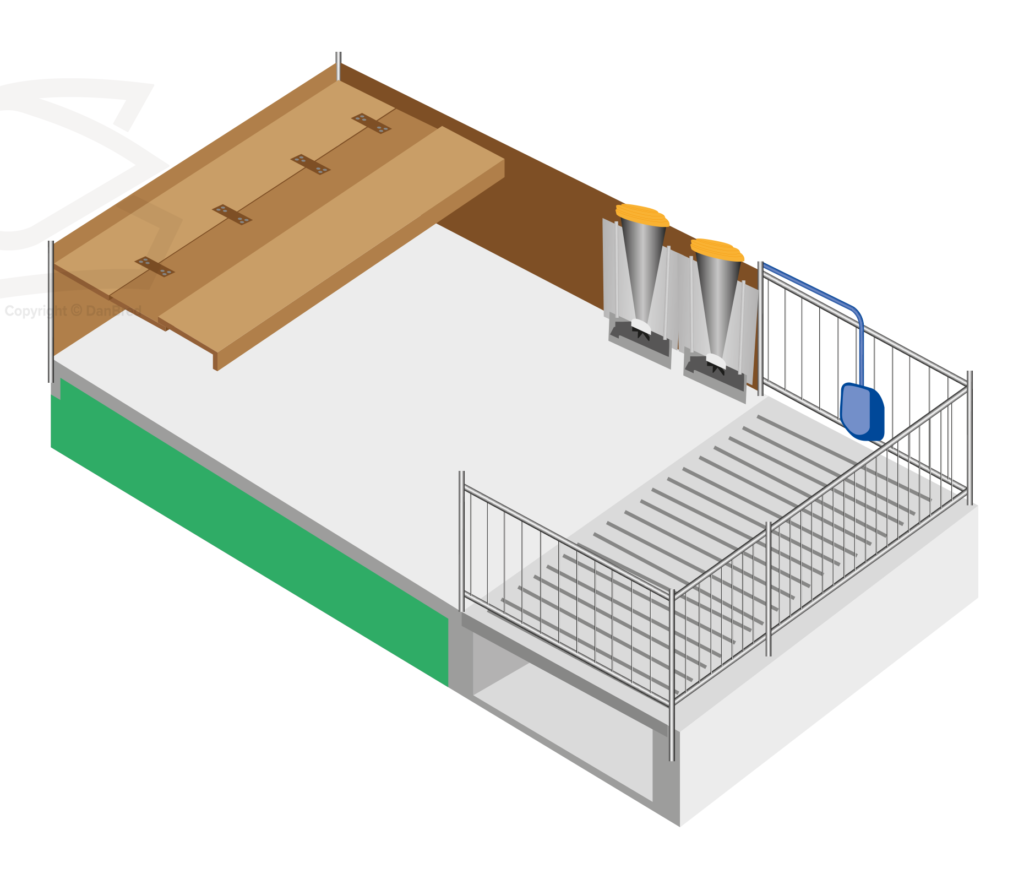 |
 |
Flooring
The factors with the greatest impact on claw health, conformation and overall conformation are flooring and pen environment. Floor construction and the surface used in the pens are vital for the overall quality of the animals and the development of exterior flaws and illnesses such as:
- OC – osteochondrosis
- Calluses
It is recommended that approximately half to 2/3 of the flooring in the pens are solid or drained concrete floors. This type of flooring will usually benefit normal claw-wearing, while also minimising damage caused by large slat openings. The wearing of the claws is essential to normal movement, as long and uneven claws can cause disabled and wobbly movement. This is also why these floor types are not recommended:
- Fully slatted floors
- Plastic grates/plastic slats
- Deep litter (straw bed) – can only be advised at the beginning of the growth.
|
|
|
The slatted area in the pens must be designed with specific measurements to ensure the quality of the animals. Concrete elements are preferred, with a slat width of 60-80 mm and a slat opening width of 18-20 mm.
The floors must be intact and non-slippery in order to minimise the risk of injuries e.g. during hierarchy fights as much as possible. Damages to breeding animals during growth should, if possible, be avoided in order to avoid permanent damages that will compromise animal quality and productivity.
|
|
|
Climate and Environment
In addition to the layout of the pens, the climate and surrounding environment must also be considered a factor. The temperature in the units affects the growth rate of the animals, by affecting feed intake and general health, which is why it is essential to always focus on the optimum temperature level in all stages.
In the weaning unit, the focus must be on both room temperature as well as floor temperatures in the covered area.
| Weight (kg) | Temperature below cover (°C) | Floor temperature below cover (°C) | Room temperature (°C) |
|---|---|---|---|
| 5,5 | 31-32 | 32 | 25-26 |
| 6,0 | 30-31 | 32 | 24 |
| 7,0 | 29-30 | 32 | 24 |
| 8,5 | 28-29 | 32 | 23 |
| 11,0 | 27-28 | 32 | 22 |
| 14,0 | 26-27 | 32 | 21 |
|
|
|
During the remaining period, in the rearing unit, room temperature should be the primary adjustment, where floor heating can slowly be phased out due to the size of the animals and minimised the need for additional heat.
| Weight, kg | Temperature, C° | |
|---|---|---|
| Breeding animals | 15 | 22-24 |
| 25-40 | 18-22 | |
| 40-100 | 15-20 |
*Based on ray ventilation – using diffuse ventilation and having dynamic movement of animals, extra attention should be given to temperature adjustments in the individual herds.
In the rearing unit, there is often dynamic insertion of animals, making it difficult to have recommendations based solely on room temperature. Room temperature is based on the all-in-all-out principle and is, therefore, dependent on a utilised capacity. In cases with dynamic insertion of animals, additional heating should be possible in each section. The pens should be made with covers on the solid floor up to 30 kg (two-climate pens), and possibly with regulative cover supplemented with floor heating or the possibility of a bedded resting area.
|
|
|
In larger breeding animals the climate requirements change once more, as the need for cooling in the pens is also relevant. It is recommended, to place sprinklers in all pens with animals larger than 20 kg, which can also be combined with a high-pressure cooling system to use when additional cooling is needed.
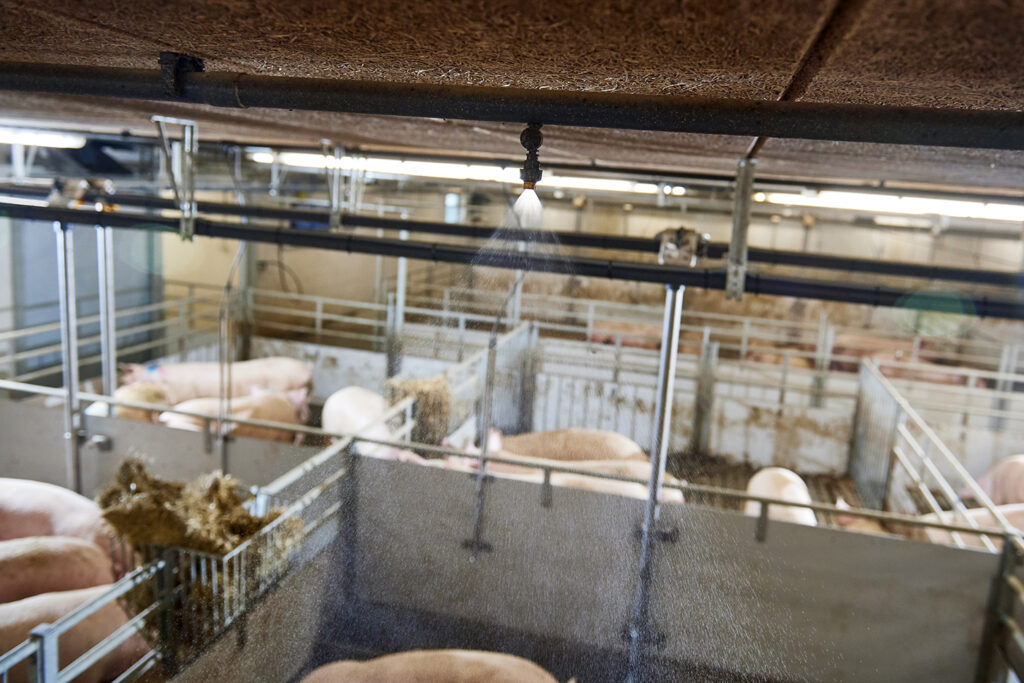 |
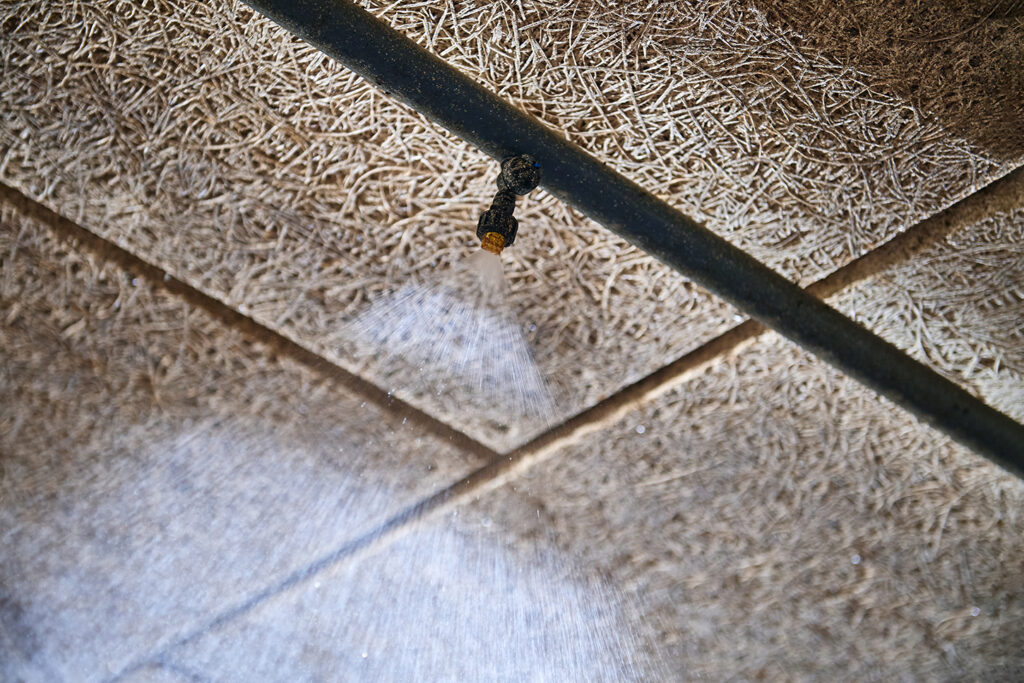 |
However, bear in mind that ultimately the most essential tool in management is observing the animals and their behaviour in the given environment.
|
|
|
Sorting and Stocking Density
Production of breeding animals should generally involve a heightened focus on sorting animals in the different units. Different animals have different needs. Sorting should start already at weaning, also with an increased focus on space and overcrowding. Both elements in ensuring the future quality of the breeding animals, which will be compromised by overcrowding in the pens.
|
|
|
Sorting breeding animals
Sorting breeding animals at weaning does not differ significantly from sorting regular weaners. However, there are several considerations to be made and taken into account, and there should also be an increased focus on both purebred and crossbred F1 breeding animals.
Breeding animals should be sorted by:
- Breed
- Gender
- Size and age
- The smallest pigs are collected in a special pen, with extra environmental conditions for their care.
Sorting the pigs by breed is important, as purebred animals require more focus and can in some cases be more sensitive. Aside from the general sorting, optimal group sizes are in the weaning section, which is also why it is not recommended to have more than 25-30 pigs per pen after weaning.
Breeding animals should be kept in separate pens, and not be mixed with other animal groups. In addition, they should be sorted by gender, to accommodate separate needs in gilts and boars.
|
|
|
Around 30 kg, the animals in the pens can be divided once again. It is not recommended to sort the animals further at this time, but only divide the pens into smaller groups. This will further ensure uniform conditions for growth and make sure that extra space is given. It is only recommended to house breeding animals in stable groups. Stable groups, as mentioned earlier, should only consist of breeding animals (respectively gilts and boars) – approximately 8-12 animals per pen starting from 30 kg, as studies have shown that an increased number of animals in the pens will compromise uniformity, and more of the animals will pull away and lie on the slatted area – meaning that quality of housing conditions and animals will decrease.
|
|
|
These stable groups should be maintained until animals are sold or the first heat is detected – after this point, it is recommended to move the gilts to the mating unit if they are for the herds’ own replacement.
Area requirements and overcrowding
It has been documented that breeding animals need additional space during growth compared to finishers. The increased space requirement arises with the need for a movement that enables muscular and skeletal development and thus ensuring the longevity of the animals.
Overcrowding decreases the quality of the animals, movement is restricted, and thus the animal’s conformation and carrying capacity is impaired. Overcrowding reduces animal productivity in the form of reduced growth and the risk of delayed puberty. A larger floor area per animal accommodates the productivity and quality of the animals. The symbiosis between productivity and quality is clear in a reduced fight for feed, improved body composition, and generally a lower level of aggression and stress in the pens.
 |
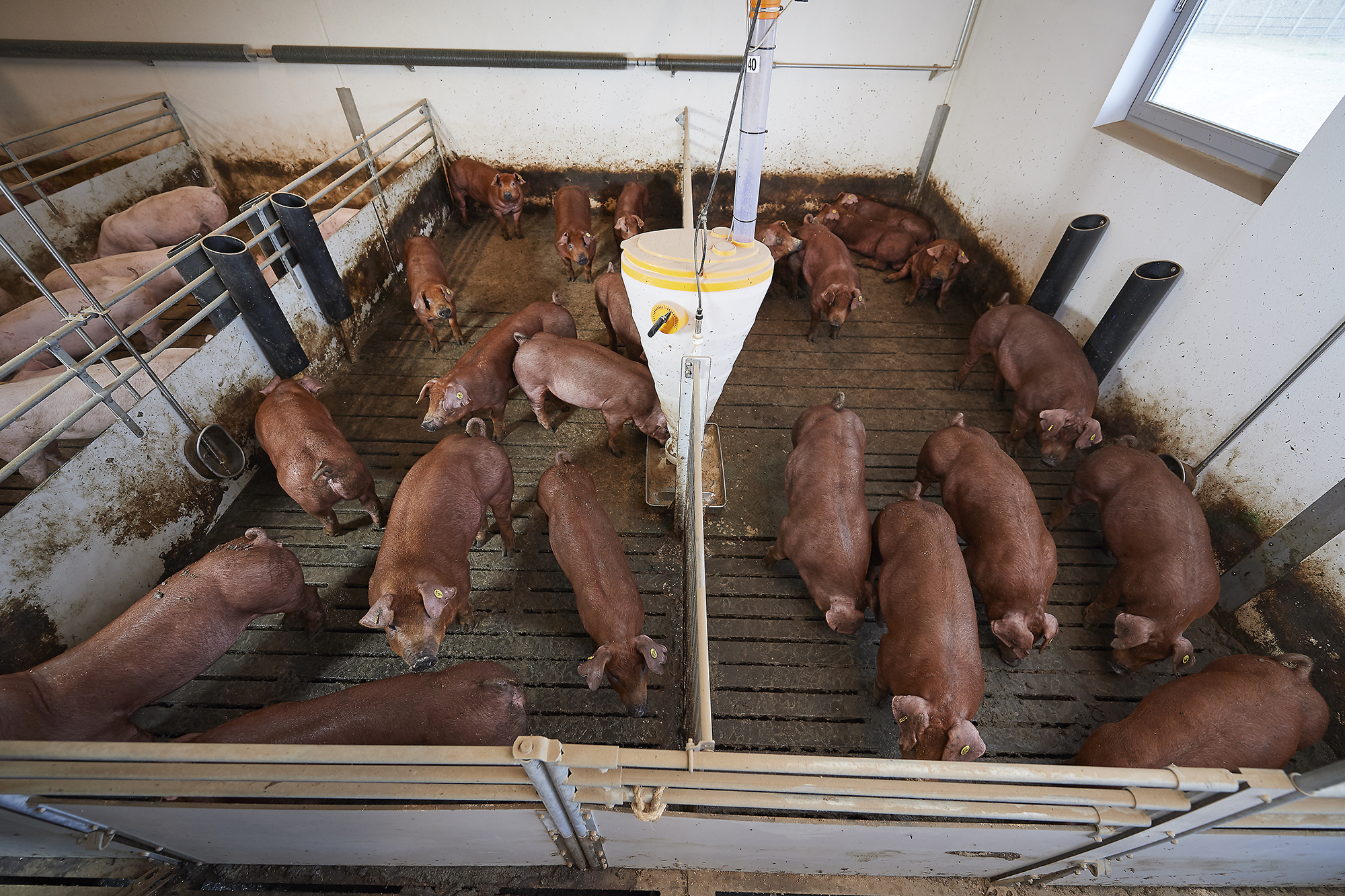 |
Additionally, the area per animal has a large effect on stability within the groups, which is why stocking recommendations should be followed and overcrowding avoided throughout the growth period. The guidelines are based on free accessible floor area, hence excluding troughs and other inventory.
| Weight, kg | Recommended area, m2 | Comments |
|---|---|---|
| < 10 | 0.15 | |
| 10-20 | 0.20 | |
| 20-30 | 0-30 | |
| 30-50 | 0.40 | |
| 50-85 | 0.75 – 1.00 | |
| 85-110 | 0.75 – 1.00 | |
| > 110 | 1.50 – 1.90 | Min. 0.5 m2 well-defined resting area |
* Recommended area does not include the floor area under the trough.
** When using long troughs, an area of 0.4 m trough space per animal and a depth of 0.3 m is calculated.
|
|
|
The pen area requirement is meant as a guideline – the primary goal should be that there is room for all animals in the pens at all times. If floor feeding is used, it is advantageous to add on the floor area per animal to ensure adequate eating space for all animals.
Handling of breeding animals in the rearing unit
The housing and layout of the pens cannot stand alone when developing the quality and productivity of the breeding animals. The daily routines and the employees handling the animals during growth are also vital elements during this period. The daily routines must be organised to meet the animals’ needs throughout the growth period and to accommodate the highest possible quality of the animals, both physical and behavioural quality.
- All animals are inspected at least once a day (preferably several times) by trained employees – be aware of any signs of disease and general behaviour.
|
|
|
- Clean out the pens on a daily basis – clean and dry floors are essential to the quality of the animals.
- Wet and unclean floors increase the risk of slippery floors and accumulate ammonia, both of which reduce claw health and quality.
|
|
|
- Weekly follow-up on daily gain and growth in the pens and different age groups.
|
|
|
All management and routines should be planned and executed with a focus on predictability and uniformity throughout the entire growth period, and handling of breeding animals in this period are key elements in their future behaviour and lifetime productivity in the breeding system.
Socialising Breeding Animals
Throughout the growth period, socialisation is highly important for herd productivity and general welfare – including animal quality and longevity. The socialisation of breeding animals includes both interactions between employees and animals, but also between animal groups.
Everyday contact with the animals should always be as calm as possible, in order to ensure positive interactions between employees and animals. The focus should be on behaviour in all routines implemented in during growth – through efficient implementation of good routines and avoiding ineffective routines causing negative interactions.
|
|
|
By introducing some simple measurements into the daily routines, and interactions with the breeding animals will result in a more social breeding animal. Pigs respond in general, by either exhibiting fear, aggression, or trust according to how they are handled. Studies show that the time spent with the animals has a significant impact on how easily they are handled in the herds. In addition, it also affects daily gain, feed conversion and reproduction efficiency in a positive manner. Make sure to keep these simple notes in mind during the handling of the breeding animals:
- Minimise fear in the animal
- Avoid rough and inappropriate handling
- Try to make positive interactions, even with unpleasant routines, such as vaccinations.
In other words; calm and stress-free human interactions enhance social qualities in breeding animals, thus both individual reproductive performance and improving herd productivity.
|
|
|
In everyday routines and management, this can be translated into more general notes for employees:
- Act decisively
- Act safe and predictable
- Have frequent contact with the animals
- Use your voice in a positive tone, and make sure you also have physical contact with the animals as you roam the pens.
As you enter the pens, it is essential that the animals approach you, and not the other way around – allowing the animals to get used to this interaction. Pens should be entered a minimum of once per day so that you are not only entering when it is time for vaccinations or other negatively associated procedures. An excellent way to make animals calm, and used to human contact and interaction is by walking next to and in front of their heads.
|
|
|
All of this, combined with frequent interactions and contact, will ensure improved behaviour and have a positive effect on future productivity as well. The daily routines must prepare the animals for a life as a highly prolific breeding animal – meaning that all steps must come together in ensuring quality and health in the animals.
Vaccination and Immunisation of Breeding Animals
A plan should be made for the herd vaccination and immunisation of breeding animals, and also for the herd in general. The plan is made in collaboration with the herd veterinarian, taking into account the age of the different animal groups and the overall health status of the herd.
Indicative vaccination program for breeding animals during the growth period:
| Vaccine | 1. vaccination | 2. vaccination | Revaccination | Comments |
|---|---|---|---|---|
| Glässer | 12 weeks
15 weeks |
18 weeks | 2-3 weeks before every farrowing | |
| Porcine Parvo Virus – PPV | 26 weeks | 3 weeks after
1. vaccination |
By weaning |
Suitable for revaccination at 1st, 3rd and 5th parity |
| PCV2 | 4 weeks | 2-3 weeks before every farrowing | ||
| Clostridium (and E. coli) | 6 weeks before first farrowing | 2 weeks before first farrowing | 2-3 weeks before first farrowing | |
| Influenza | 26 weeks | 3 weeks after the first vaccination | 2-3 weeks before every farrowing | Can be given as blitz vaccine 2-3 times a year |
* Breeding animals for sale should also meet the specific demands of customers and possibly, individual market specifications.
In addition to a planned and scheduled vaccination program, natural immunity should also be taken into consideration. In fully sectioned units, it is difficult to ensure the animals’ immunity through natural infections in the herd. In these cases, it might be necessary to spread faeces from e.g. gestating sows to the breeding animals, as this will ensure further immunisation. However, this should only be done in agreement with the herd veterinarian.
|
|
|
Alternatively, it is only in the mating unit younger gilts will come into contact with older sows, and it is possible to ensure natural immunisation. At this point interactions between gilts and newly weaned sows should be a focus area, as this will increase the immunity and thus ensure high health.

